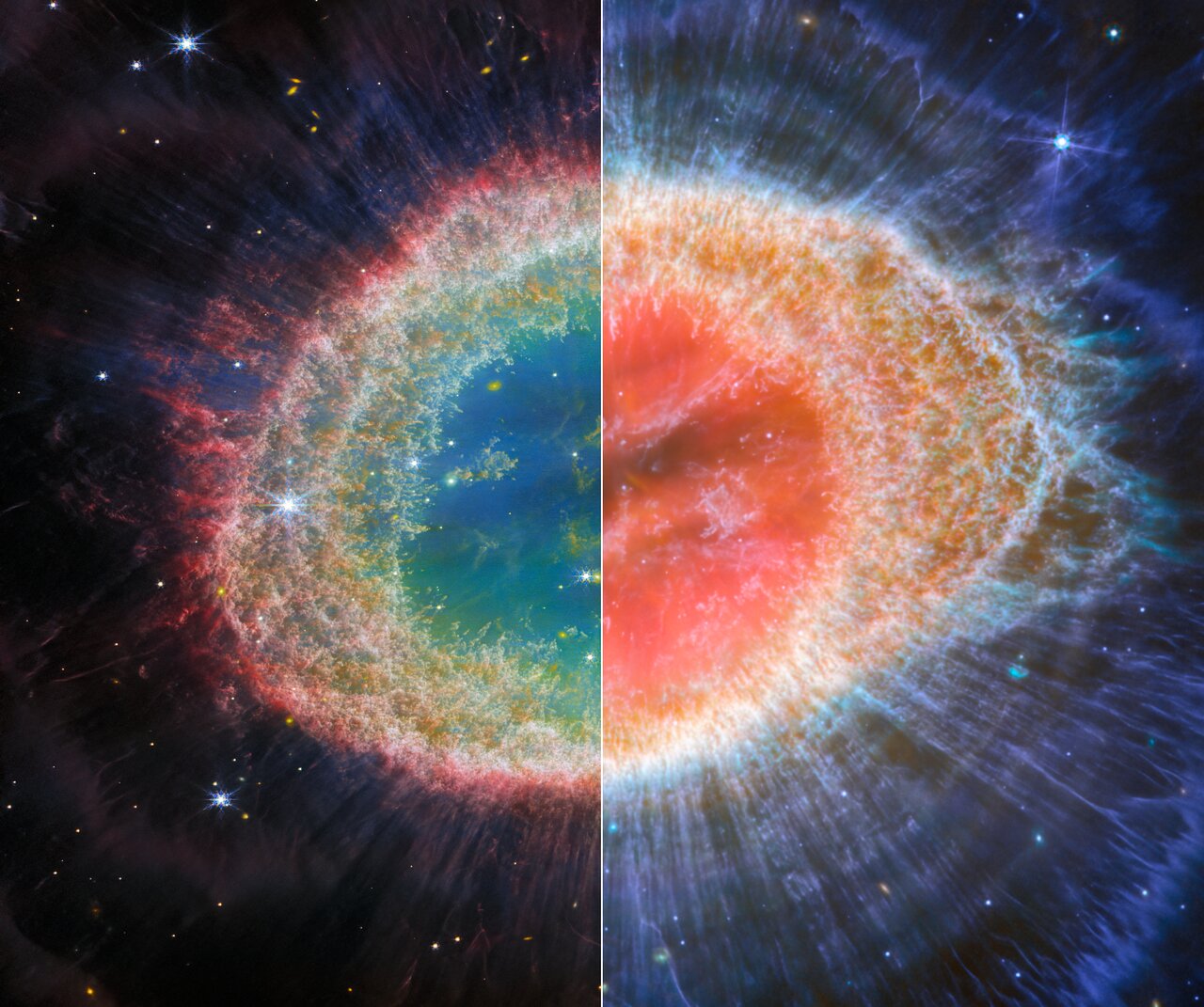The Lyra Nebula was captured with unprecedented precision by the famed James Webb Space Telescope, revealing details of this celestial body never seen before.
James Webb, the space telescope designed by NASA, ESA and CSA, once again shows its dazzling performance. Known for its sublime photos, it proves its mind-blowing abilities once again by providing us with images of the Lyra Nebula (also known as M57 and NGC 6720). Discovered in 1779 by Charles Messier, a French astronomer, it had never been seen so splendid.
Very meticulous image capture
Equipped with instruments optimizing the observation of infrared radiation, James Webb is able to take long-distance photographs without being bothered by the presence of stardust. The series of new photographs of the Lyra Nebula come from two different instruments installed on the telescope: the NIRCam (Near-InfraRed Spectrometer) camera which captures the near infrared (0.6 to 5 µm) and the MIRI (Mid InfraRed Instrument ) taking care of the mid-infrared (5 to 28 µm).
Thanks to these two powerful cameras which allow Webb to circumvent the main constraints of spatial photography, the rendering of the nebula is truly spectacular. This one is known to have a small diameter, which makes it difficult to see, but James Webb has displayed it in all its beauty. The minute details of the inner ring, formed of a filamentary structure, are thus revealed thanks to the NIRCam. The outer parts of the ring are also very well highlighted thanks to the MIRI.
A true window into celestial history
Already observed by the Hubble telescope, this nebula is a treasure for the scientific community. Thanks to the study of its structure and its chemical composition, it is a kind of “spatial archive”, which informs us about the cycles of stars, from their birth until their death. Observing it is like traveling in time, since it is located 2,500 light years from our planet.
This celestial body is mainly composed of dust and various gases: helium, hydrogen, oxygen and nitrogen among others. It also contains more complex molecules, polycyclic aromatic hydrocarbons (PAHs), witnesses of the intense chemical reactions that took place at its heart. The main ring is surrounded by a series of huge concentric arcs, which demonstrates an interaction between the nebula’s main star and another star of lower mass.
Captured as part of the GO 1558 observation program, these stunning images are sure to delight space and astronomy enthusiasts. In addition to being superb to look at, they represent a mine of very important information for scientists to exploit. Almost 250 years after its discovery, the Lyra Nebula has not yet revealed all its secrets!
Source : ESAwebb

8